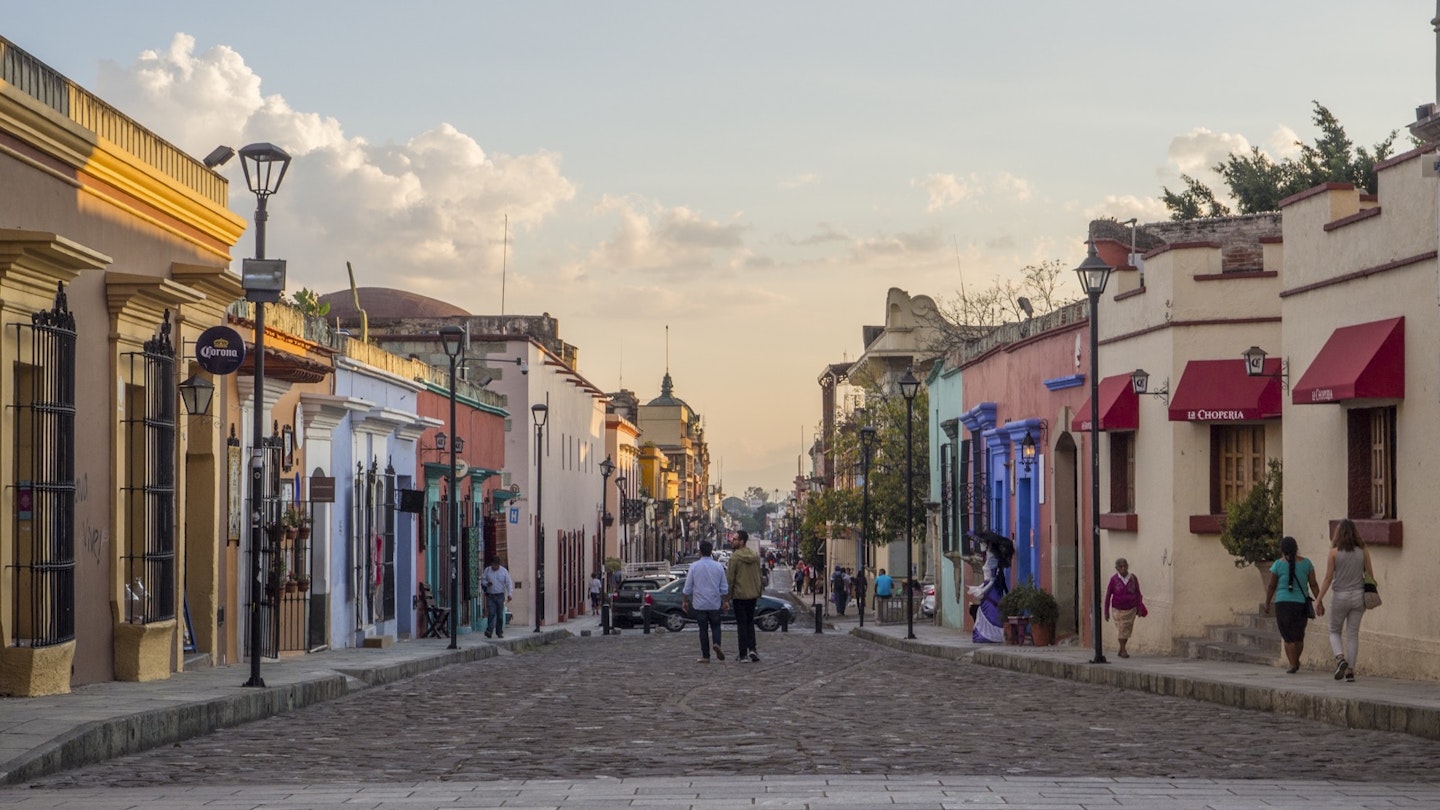Small-town Mexico may not come immediately to mind when you think of a queer traveller’s paradise, but throughout Oaxaca, the beach villages and city streets offer both queer history and modern hotspots.
Any hotels, bars, or restaurants popular with tourists are likely to be gay-friendly; however, visibly gay, trans, or gender-nonconforming individuals could face bigotry just about anywhere. Although the Mexican constitution prohibits discrimination based on sexual orientation, violence against LGBTIQ people is sadly not uncommon.
LGBTIQ History
While LGBTIQ individuals played significant roles in indigenous communities prior to colonization, few sources provide an unbiased view of these cultures devoid of Spanish influence. During the colonial period, homosexuality was criminalized, and many faced violence for behaviors and identities that were demonized by the Spanish and the Catholic Church. This violence continued long after the revolution, despite independence legalizing private homosexual acts. Nevertheless, across the country, LGBTIQ individuals have been fighting for their rights, resulting in gradual progress.

Same-sex marriage was legalized in Mexico City in 2009, and a total of twelve other states have since followed suit, with pending legislation in various regions.
Interestingly, it was the fight for same-sex marriage in Oaxaca that opened the door to the nationwide wave of legislation. Currently, the granting of civil marriage certificates to same-sex couples in Oaxaca is assessed on a case-by-case basis.
Furthermore, transgender rights are not universally recognized. In Oaxaca, however, there exists a long-standing recognition of gender non-conformity within indigenous communities. Third-gender individuals, often women assigned male at birth, hold esteemed positions in places like Juchitán de Zaragoza.
Additionally, there is a rich history of unique roles for two-spirit people, typically assigned to intersex individuals.
Oaxaca boasts a fascinating indigenous history, particularly with the Zapotec people, who, unlike the Maya and Mexica (Aztec), didn’t form a community focused on conquest. Their culture, along with ideas of masculinity, emphasizes art, crafts, music, dance, and education. This is evident in the vibrant arts scene in Oaxaca City and the celebration of queer and trans lives along the coast.

In Oaxaca City
The capital of Oaxaca State features a large LGBTQ community, clearly illustrated by the extensive participation in the city’s annual Pride parade. There are three main gay bars, each uniquely appealing.
La Envidia serves as the quintessential dive bar in the city and is less frequented by tourists. Visitors shouldn’t expect fancy cocktails or comfortable seating; however, if you have friends in Oaxaca’s LGBTQ community, gathering for a night of beer and mezcal is a must.

The most popular nightclub for Oaxaca’s queer community is Club 502, commonly referred to as “The Number,” an excellent choice for mixed drinks and dance music. As is typical for most clubs in the city, the party doesn’t kick off until late, with crowds gathering after midnight on Fridays and Saturdays.
For a male dance revue, visit La Costa Nightclub. While women are permitted here (and at venues with female exotic dancers), this club primarily caters to men.
On the Coast
The contrast between Oaxaca’s coast and its capital is striking, not just in terms of climate variations along the seven-hour drive. Zipolite, in particular, has gained a reputation as a prime destination for queer tourists throughout the decades, while Juchitán de Zaragoza is known for its long indigenous traditions of queer and trans inclusivity within the community.

Zipolite
At the west end of the beach in Zipolite, Playa Roca Blanca serves as the most accessible gathering point for singles, couples, and groups. Naked sunbathing is acceptable along the entire beach, with this area being particularly popular among visitors of Shambhala and Hotel Nude.
For a unique experience, venture to Playa del Amor, and climb up the cliffs to Vista del Amor, a bar with stunning views. The beach below, known as the beach of love, is also clothing optional and popular among gay visitors.
While Hotel Nude presents a higher-end lodging option on the beach’s west end, on the opposite side near Playa del Amor, Hotel Neptuno proudly displays the rainbow flag at its entrance, marking its long history of welcoming Mexico’s queer community and international LGBTQ travelers.
Restaurants and bars in the vicinity are very inviting, with several being LGBTQ-owned. Be sure to visit Cafe Orale for a delicious breakfast by the beach or a quick coffee break in the garden. If you seek an apartment, Heven is slightly uphill from Playa Roca Blanca, but the view is undeniably rewarding.

Juchitán de Zaragoza
The small city of Juchitán de Zaragoza lies a few kilometers inland from the coast, making it well worth the trip. Home to both Zapotec and Huave peoples, this region boasts the lowest rates of violence against LGBTQ individuals in the state.
The strong indigenous culture here celebrates queer and trans individuals, with third-gender muxe people holding a significant place within the community. In this area, women engage in roles in finance and politics, while men focus on agriculture, arts, and crafts. It is considered an honor to have a muxe person in one’s family.
Each year, the town holds numerous velas, including one specifically honoring the muxe members of the community. These rituals celebrate various saints and essential trades in the town. The term vela translates to candle, reflecting the all-night festivities characterized by feasting, dancing, and generous amounts of mezcal. If you wish to take part, dressing up is recommended!
The main vela season spans from April to May, with additional events taking place in June, August, and September. Significantly, the Muxe Vela occurs every November, coinciding with the onset of winter’s high season on the coast.





